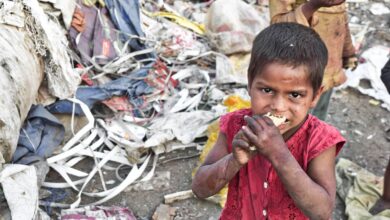Hunger and Poverty: Understanding the Crisis and Seeking Solutions

Introduction
In today’s world, hunger and poverty continue to pose significant challenges, affecting millions of individuals and communities worldwide. This article aims to shed light on the complex issues of hunger and poverty, their causes, impact, and potential solutions.
Understanding Hunger and Poverty
Defining Hunger
Hunger refers to the persistent lack of access to sufficient food, resulting in undernourishment and malnutrition. It affects individuals of all ages, particularly children, and has severe consequences on their physical and mental well-being.
Defining Poverty
Poverty is a multifaceted issue characterized by a lack of resources, opportunities, and basic necessities. It encompasses both material deprivation and the inability to participate fully in social, economic, and political life. Poverty often goes hand in hand with hunger, as limited financial means restrict access to adequate food.
Causes of Hunger and Poverty
Hunger and poverty are the outcomes of various interconnected factors, including economic, social, and environmental elements.
Economic Factors
Inadequate income and employment opportunities, economic inequality, and unequal distribution of resources contribute to hunger and poverty. Lack of access to essential services, such as healthcare and education, further exacerbates the cycle of poverty.
Social Factors
Discrimination, social exclusion, and marginalization based on factors like gender, ethnicity, and caste can perpetuate poverty and hunger. Inequitable power dynamics and limited social support systems also play a significant role.
Environmental Factors
Natural disasters, climate change, and environmental degradation pose significant challenges in combating hunger and poverty. These factors can disrupt agricultural systems, destroy livelihoods, and increase food insecurity.
Impact of Hunger and Poverty
The consequences of hunger and poverty are far-reaching and affect individuals, communities, and societies as a whole.
Health Consequences
Malnutrition resulting from hunger and poverty weakens immune systems, increases vulnerability to diseases, and hampers physical and cognitive development, particularly in children. Hunger and poverty also contribute to mental health issues and perpetuate a cycle of ill-health and poverty.
Education and Development
Lack of access to education due to poverty prevents individuals from acquiring essential knowledge and skills, limiting their opportunities for personal and economic growth. This hampers overall development and perpetuates intergenerational poverty.
Societal Issues
Hunger and poverty can lead to social unrest, conflicts, and a breakdown of community structures. They undermine social cohesion, create disparities, and hinder progress towards achieving sustainable development goals.
Addressing Hunger and Poverty
Tackling hunger and poverty requires comprehensive efforts from various stakeholders, including governments, international organizations, and non-profit organizations.
International Efforts
On an international level, organizations such as the United Nations, World Food Programme (WFP), and other global initiatives play a crucial role in addressing hunger and poverty. These organizations work towards providing emergency food aid, implementing sustainable development projects, and advocating for policy changes to alleviate poverty and ensure food security.
Government Initiatives
Governments have a significant responsibility in combating hunger and poverty within their own countries. They can implement social welfare programs, create employment opportunities, and invest in infrastructure to improve access to basic services. Government policies focused on poverty reduction and equitable distribution of resources are vital in addressing these issues.
Non-Profit Organizations
Numerous non-profit organizations are dedicated to fighting hunger and poverty at the grassroots level. These organizations work closely with local communities, providing assistance in the form of food aid, education, skill training, and empowerment programs. Their initiatives help vulnerable populations break the cycle of poverty and build sustainable livelihoods.
Sustainable Solutions
Addressing hunger and poverty requires sustainable solutions that go beyond immediate relief efforts. Here are some key approaches:
Empowering Communities
Empowering communities to actively participate in decision-making processes and take ownership of their development is crucial. By involving local stakeholders, implementing bottom-up approaches, and promoting community-led initiatives, long-term sustainable change can be achieved.
Education and Skill Development
Investing in education and skill development programs equips individuals with the knowledge and capabilities to secure better employment opportunities, break free from poverty, and contribute to the overall development of their communities. Accessible and quality education is essential in eradicating poverty.
Sustainable Agriculture
Promoting sustainable agricultural practices, including agroecology and organic farming, can enhance food production while preserving the environment. Supporting small-scale farmers, improving irrigation systems, and ensuring fair market access can contribute to food security and poverty reduction.
Conclusion
Hunger and poverty are interconnected challenges that require multi-faceted approaches and collaborative efforts. By addressing the root causes, empowering communities, and implementing sustainable solutions, we can strive towards a world where no one goes to bed hungry or lives in poverty. It is imperative for governments, international organizations, non-profit entities, and individuals to join forces and prioritize the fight against hunger and poverty.
FAQs
1. What is the main cause of hunger and poverty?
Hunger and poverty have multiple causes, including economic factors, social inequalities, and environmental challenges. Lack of access to resources and opportunities perpetuates the cycle of hunger and poverty.
2. How does hunger impact children?
Hunger and malnutrition in early childhood can have severe consequences on children’s physical and cognitive development. It can impair their growth, weaken their immune systems, and hinder their educational attainment.
3. How can individuals contribute to addressing hunger and poverty?
Individuals can contribute by supporting local non-profit organizations, volunteering their time and skills, advocating for policy changes, and making sustainable lifestyle choices. Small actions collectively make a significant impact.
4. What role do governments play in tackling hunger and poverty?
Governments play a crucial role in implementing social welfare programs, creating employment opportunities, and enacting policies that promote equitable distribution of resources. Their commitment is vital in addressing these pressing issues.
5. How can sustainable agriculture help alleviate hunger and poverty?
Sustainable agriculture practices promote efficient use of resources, protect the environment, and enhance food production. By supporting small-scale farmers and ensuring fair market access, sustainable agriculture can contribute to food security and poverty reduction.



